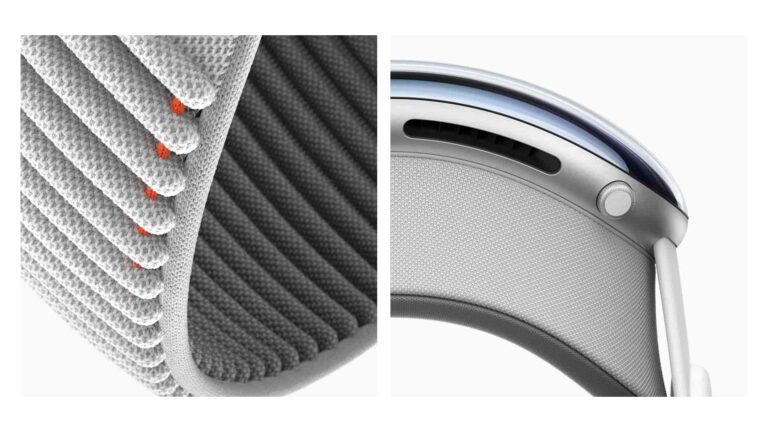
Apple has finally stepped into the VR market. The Vision Pro fills a unique niche in the industry as a mixed-reality headset instead of a strict VR or AR system. While this means it may lack universal appeal, it also has impressive potential in areas where other headsets haven’t quite gained traction — namely, in content creation.
The Vision Pro aims to be less of an entertainment system and more of a workhorse. Apple products are already favorites for photo and video editing, and the Vision Pro could take that reputation even further. Here are five ways how.
1. Immersive Editing Environments
Apple calls the Vision Pro a “spatial computing” system, seeing it as an extension of Mac or iOS environments. As part of that goal, it can act as a virtual display for Mac, letting users open and interact with apps in mixed reality. The advantage for media editing is that your workflows no longer have to fit within the confines of your monitor.
Content creators can view their photos or videos in as large or small formats as they’d like, making it easier to spot and adjust fine details. Unlike most VR headsets, the Vision Pro lets users control how much of the real world they see in their display. Consequently, you can edit in full VR to cut out distractions or make it more like an AR environment to collaborate with co-workers.
2. 3D Photo and Video Capture
The Apple Vision Pro is more than a unique display tool. The headset can also capture 3D videos, photos, and spatial audio. Capturing in-VR experiences unlocks new content possibilities previously only possible with highly specialized camera equipment.
As VR adoption grows, content creators could use these features to capture and edit content entirely in simulated reality for a seamless, VR-focused experience. Alternatively, it can provide unique behind-the-scenes footage for creators wanting to share their editing process.
3. Remote Collaboration
The Vision Pro’s unique mixed reality features make it particularly beneficial for collaborative projects. Conventional post-production can take a long time when you must meet up with other people or send files back and forth. Being able to work together in mixed reality streamlines this collaboration.
Immersive computing environments mean you can keep editing software in a window to your side and view your co-workers in FaceTime in front of you. Because the Vision Pro is mixed reality instead of strict VR, it lets you work with in-person colleagues and remote collaborators simultaneously.
These features make working efficiently as a group easier, no matter where people are. Nearly 70% of all employees are actively seeking new careers, so there’s never been a more important time to embrace remote teams. Content creators can use Vision Pro to find and work with leading talent from across the globe without waiting for in-person meetups.
4. Input Variety
Other VR headsets can offer some of the same collaboration and immersion benefits, but they rely on awkward or bulky controls. The Apple Vision Pro, by contrast, uses voice controls and hand motions, leaving creators hands-free while they work and enabling an easier learning curve.
More importantly, the Vision Pro doesn’t confine its controls to these defaults. You can also use a virtual keyboard if you find it faster than voice commands. Alternatively, you can connect your headset to a physical keyboard and mouse for more familiar controls.
This freedom of choice means every user can choose an input system that works for them. Skills gaps are the biggest barrier to new tech, so support for a wider range of control systems — some of which users are already familiar with — goes a long way.
5. Professional-Grade Performance
If nothing else, the Vision Pro is ideal for post-production efficiency because of its high performance. The headset delivers more resolution than a 4K TV for each eye, making it easier to see fine details. It also uses Apple’s M2 chip — which has a neural engine 40% faster than the M1 — along with additional, VR-specific processors for fast rendering and immediate responses.
Using the Vision Pro as an extended display for another computer gives it even more processing power. Consequently, you can run bandwidth-hungry editing apps without worrying about slowing them down in VR.
Mixed Reality Is the Next Frontier in Content Creation
The Apple Vision Pro is not for everyone. It’s expensive, and many of its features may go unused by a general audience. However, it represents an impressive leap forward for serious content creators.
The Vision Pro’s speed, adaptability, and support for so many different apps and peripherals make it an ideal tool for editing. As new versions and similar tech from other companies follow, mixed reality could redefine the post-production process.
 April Miller is a senior writer at ReHack Magazine and editorial contributor at AR Insider. She specializes in VR/AR, IoT, and business technology. See her work here and follow her @rehackmagazine.
April Miller is a senior writer at ReHack Magazine and editorial contributor at AR Insider. She specializes in VR/AR, IoT, and business technology. See her work here and follow her @rehackmagazine.






